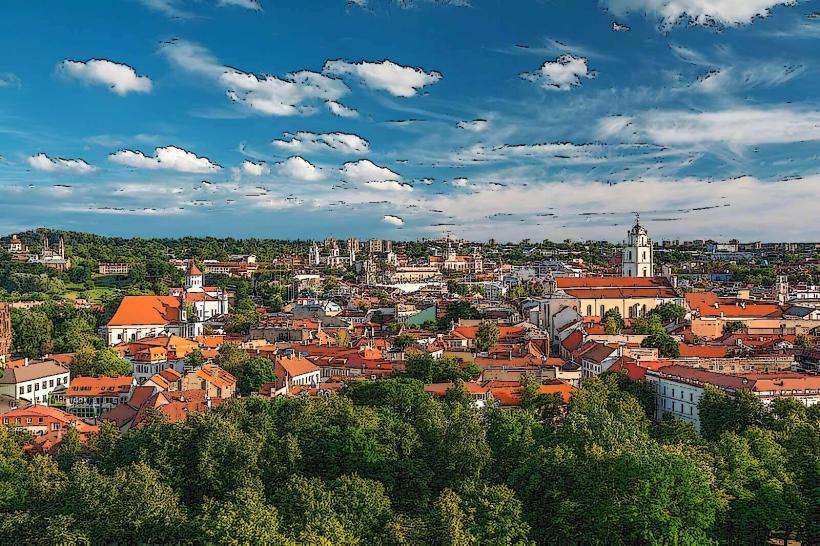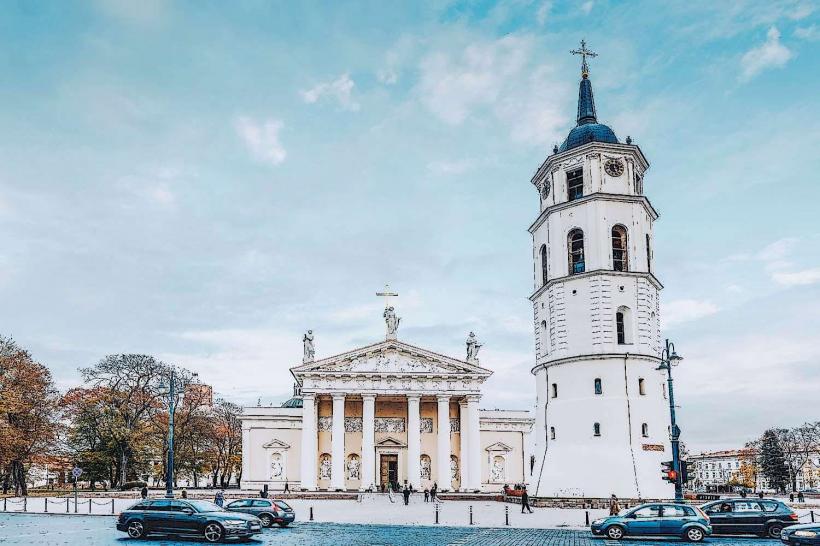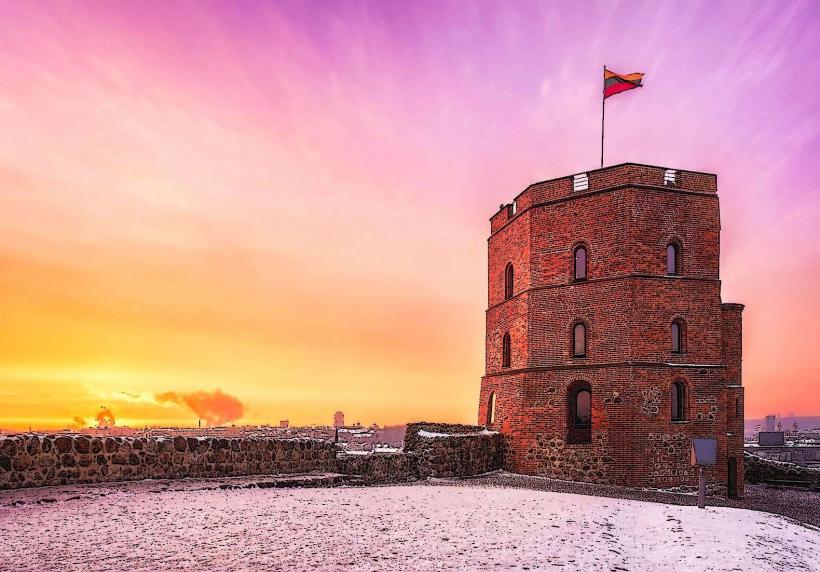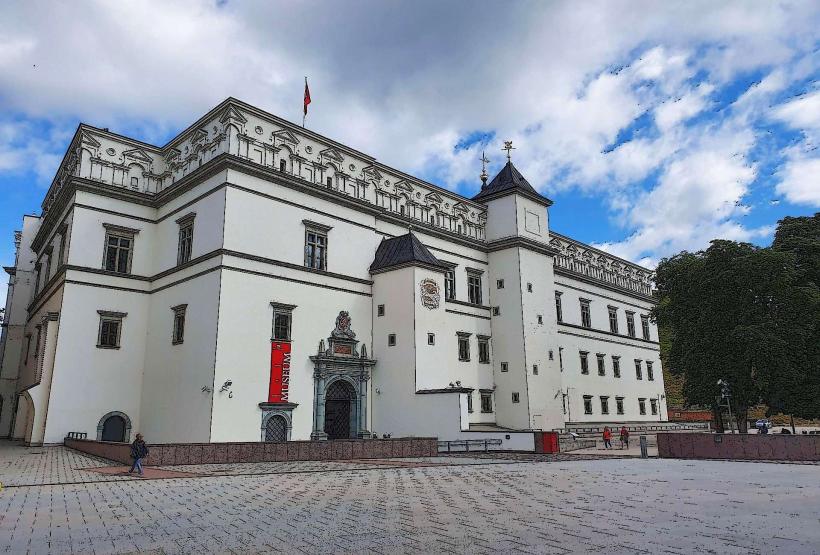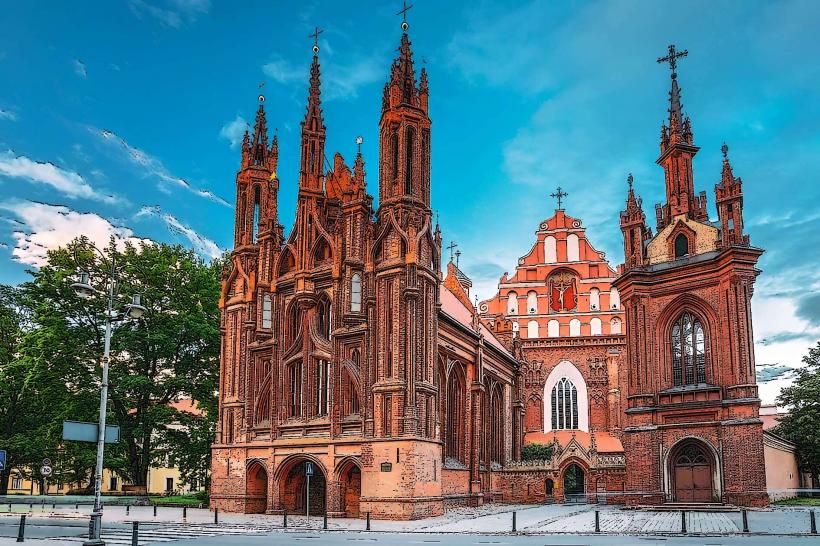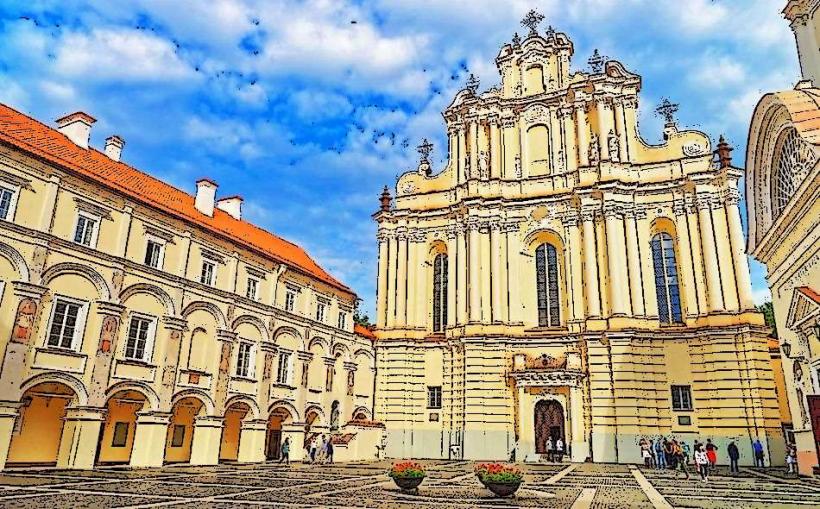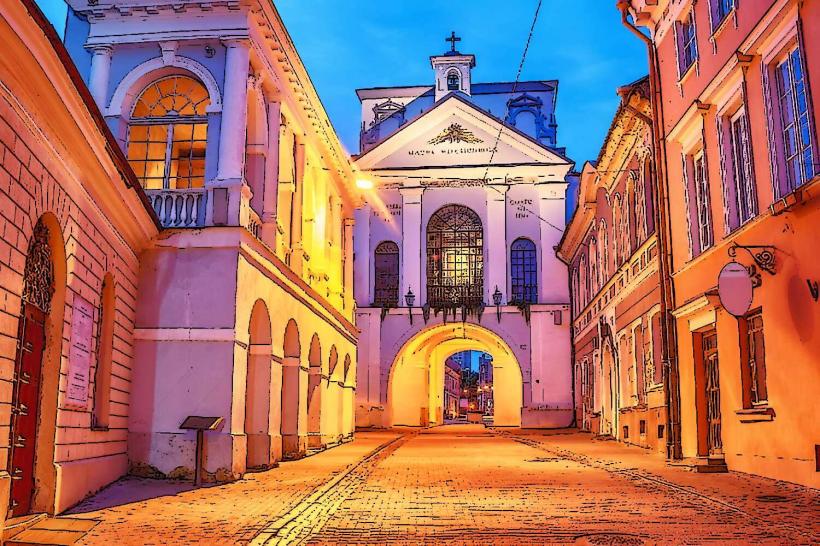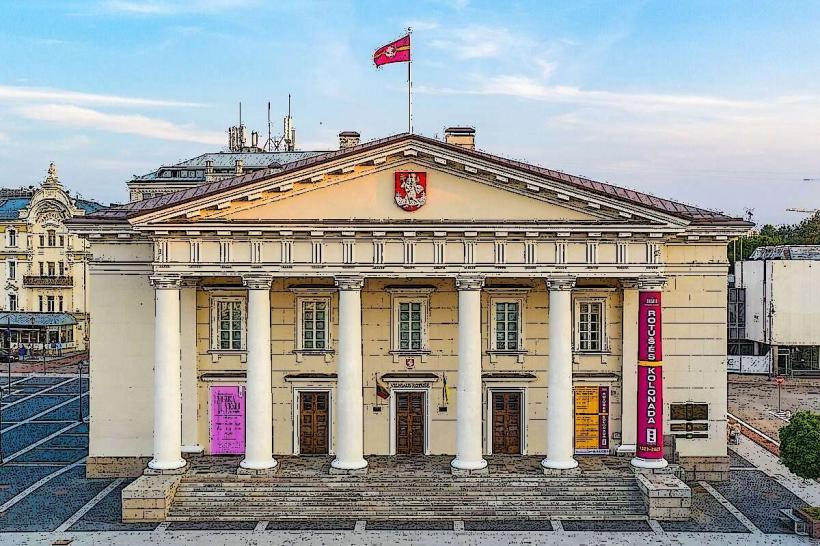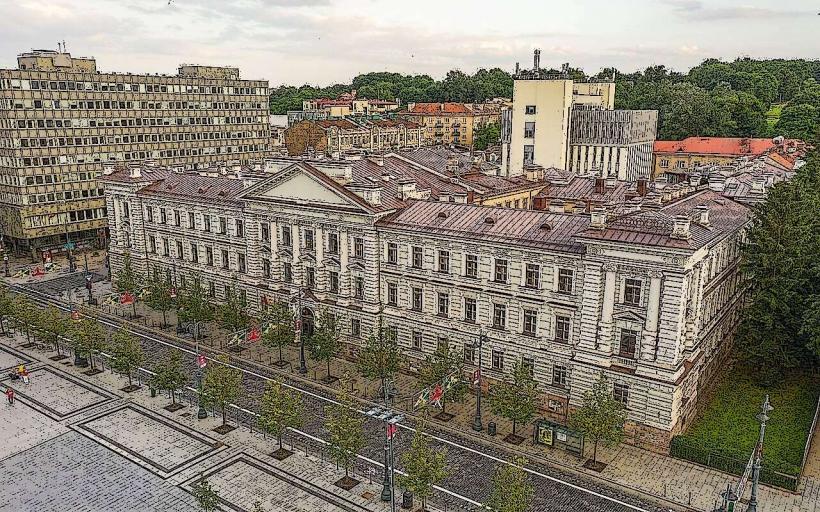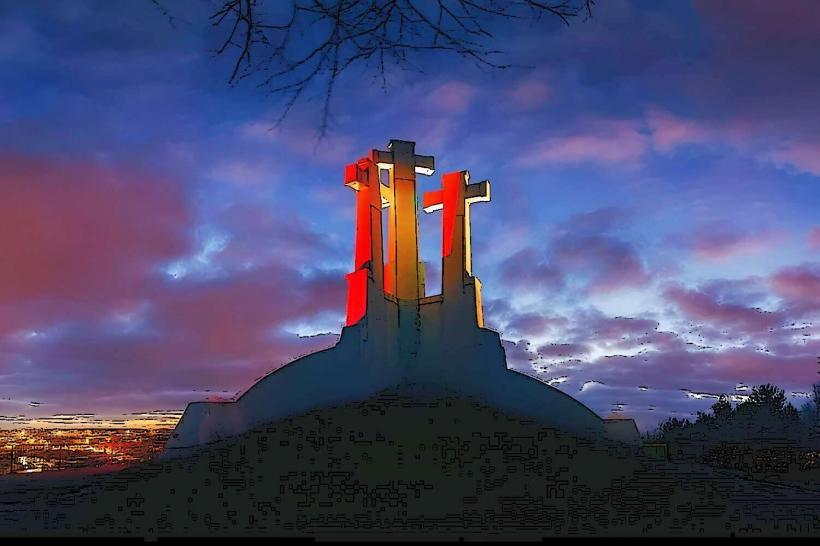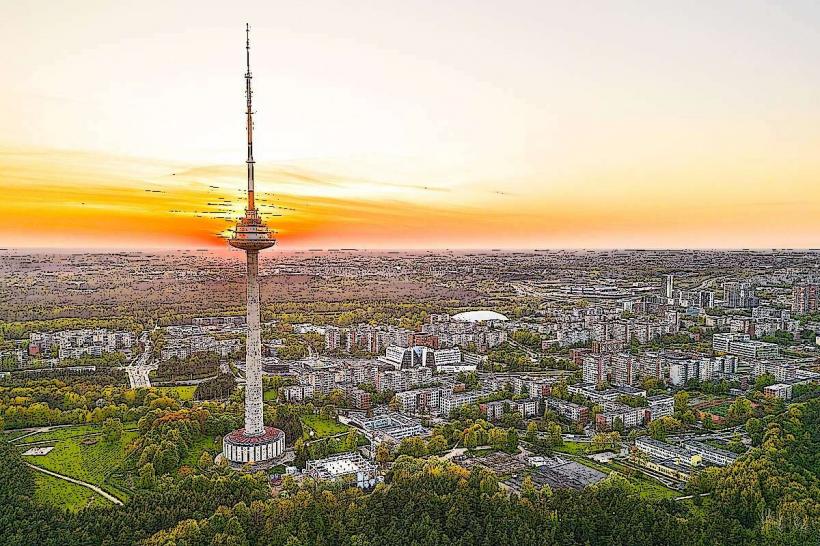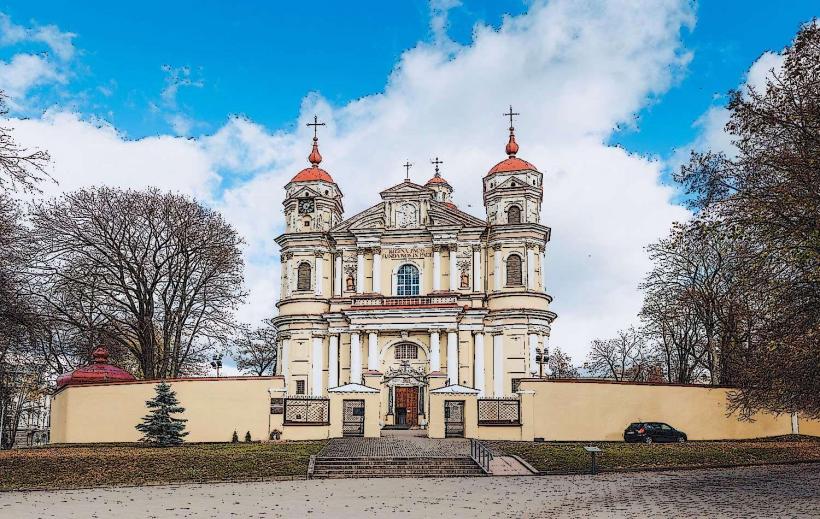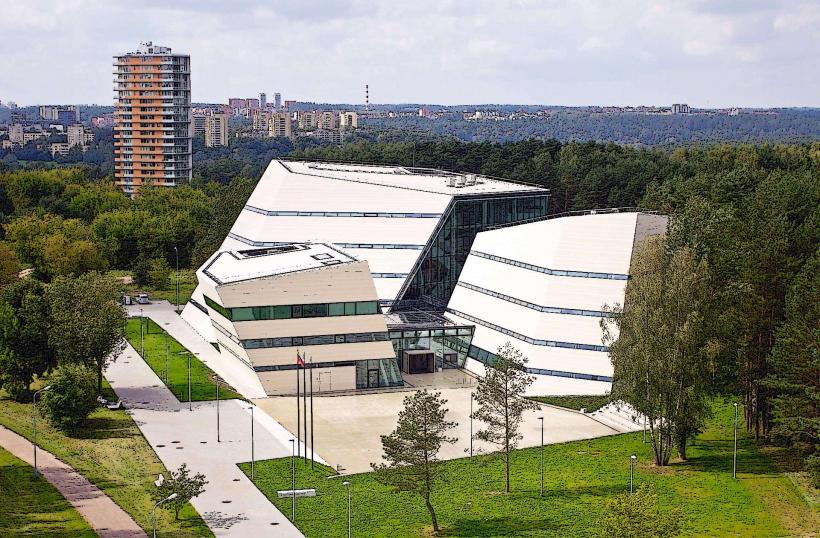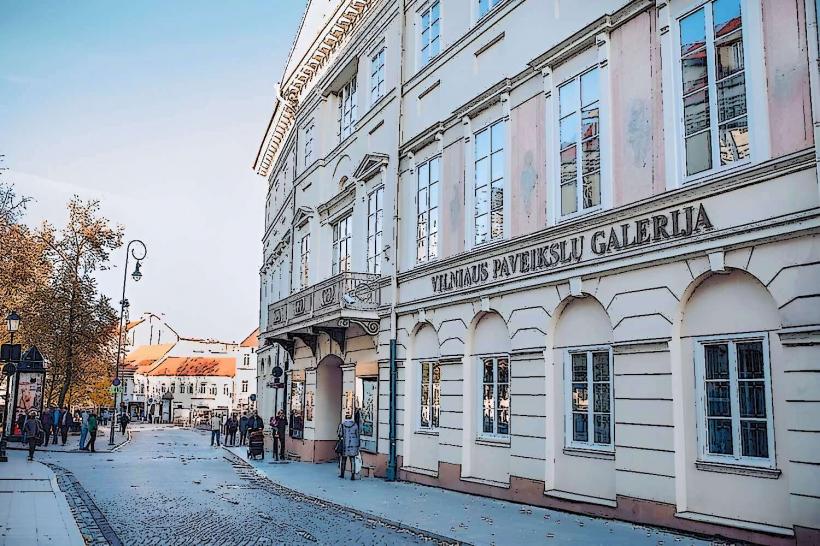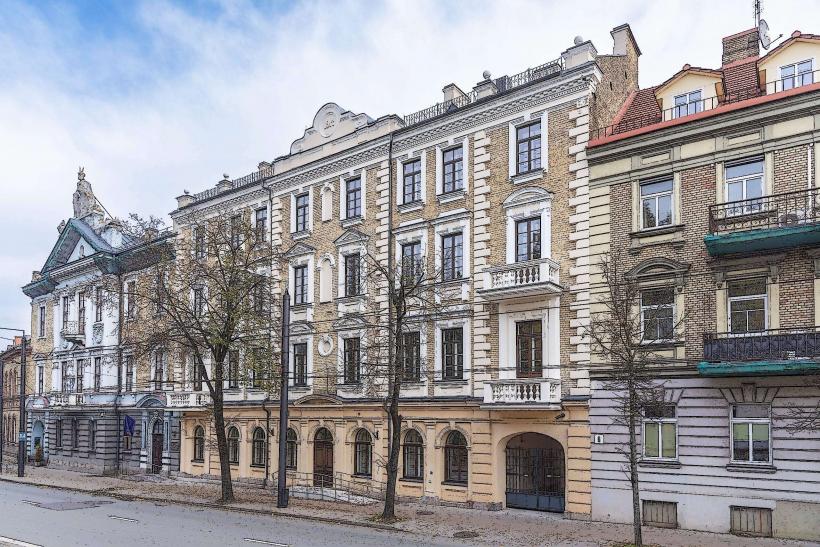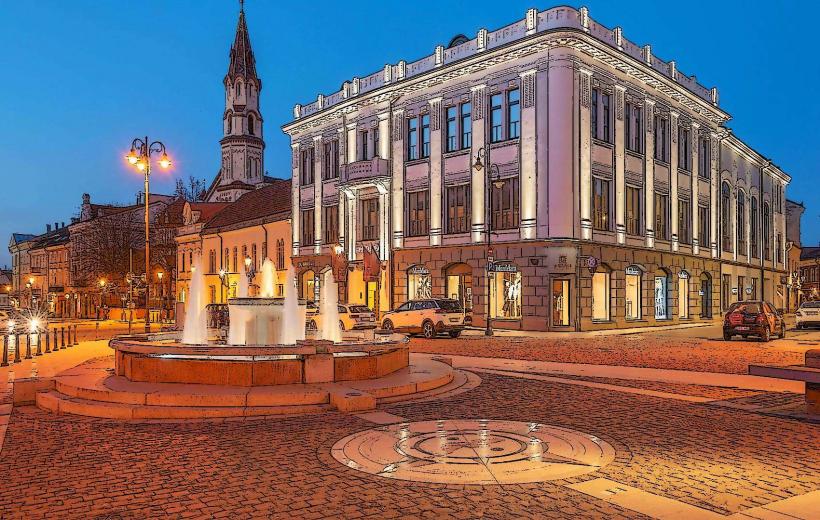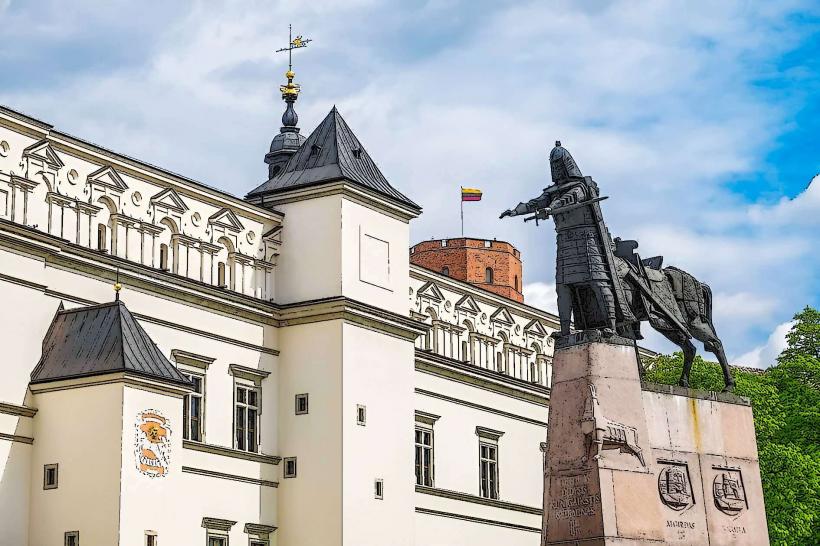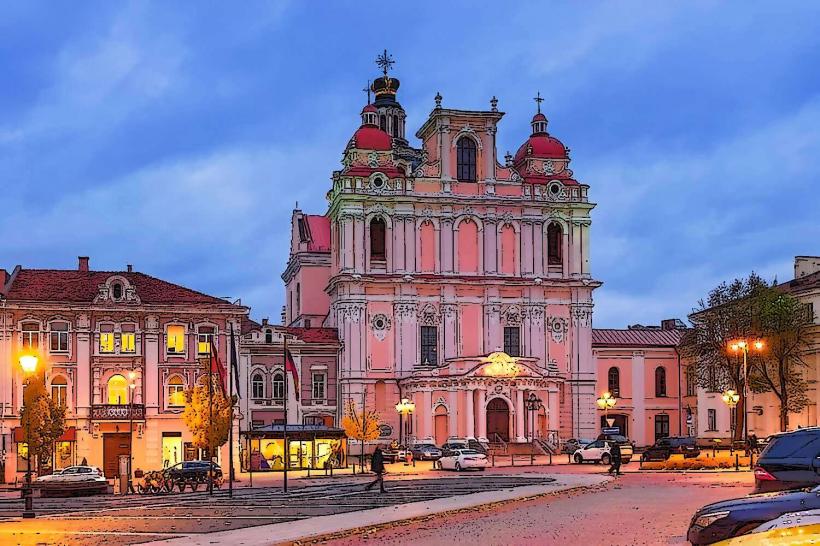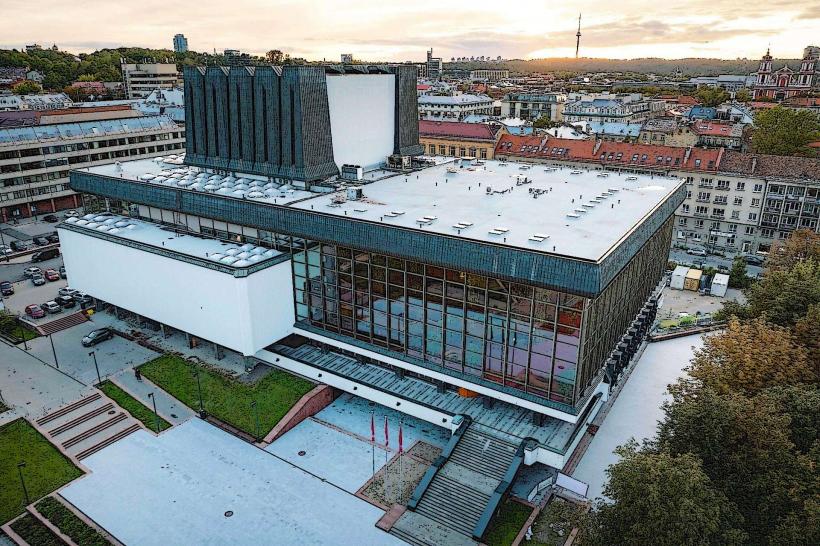Information
Landmark: Town Hall SquareCity: Vilnius
Country: Lithuania
Continent: Europe
Town Hall Square (Rotušės Aikštė)
Town Hall Square (Rotušės Aikštė) is a historic and central public square in the heart of Vilnius, Lithuania. As one of the oldest and most significant squares in the city, it holds a special place both in the urban landscape and the historical narrative of Vilnius. The square is surrounded by important architectural landmarks, serves as a venue for cultural and social events, and offers a glimpse into the city's medieval past.
Historical Significance
Origins: Town Hall Square dates back to the 14th century, when it was first developed as a central hub for commerce, trade, and municipal administration. Over the centuries, the square has been a focal point for city life, witnessing important political, social, and cultural events in the history of Vilnius.
Vilnius Town Hall: The square gets its name from the Vilnius Town Hall (Lithuanian: Vilniaus rotušė), which stands at the northern edge of the square. The Town Hall was historically the center of municipal power in Vilnius, where city council meetings were held, and it played an important role in the governance of the city during both the Grand Duchy of Lithuania and later, under various foreign rulers.
Role in Trade and Markets: During the Middle Ages, Town Hall Square was the site of various markets and trade activities, contributing to the economic prosperity of the city. It was a place where merchants from different parts of Europe gathered to sell their goods, and it played an integral role in the commercial life of Vilnius.
Architectural Evolution: Over time, the square has evolved in terms of architecture. The Town Hall itself has undergone several reconstructions, with the present structure dating back to the 18th century. The square also saw the construction of other important buildings, such as residential houses, palaces, and churches, reflecting the city’s Baroque and Neoclassical influences.
Town Hall Building
The Vilnius Town Hall is the main architectural feature of the square and stands as an impressive example of Neoclassical architecture. It was originally constructed in the 16th century but has been rebuilt and renovated multiple times, with the current structure dating to the 18th century.
Town Hall Features: The building's design includes a large facade, with columns, symmetrical windows, and a grand entrance. The Town Hall has historically been used for various functions, including as a seat of local government and a venue for public events. Today, it houses a museum dedicated to the history of Vilnius and is used for occasional cultural events and concerts.
Cultural and Civic Events: The Town Hall has long been a venue for important civic and cultural events, including concerts, festivals, and official ceremonies. It has hosted events that mark significant moments in Lithuania's history, particularly during the Lithuanian National Revival in the 19th century and Independence movements of the 20th century.
Modern Use of Town Hall Square
Public Gatherings: Today, Town Hall Square remains an important cultural space. It is often used for festivals, concerts, open-air performances, and other public events. In particular, it hosts the annual Vilnius Christmas Market, which attracts many visitors during the holiday season.
Historic Sites and Landmarks: The square is home to several historic buildings besides the Town Hall. The Palace of the Grand Dukes of Lithuania and Vilnius University are both located in the vicinity, further enriching the cultural atmosphere of the area. The square’s surroundings feature cobblestone streets that contribute to the medieval feel of the area.
Tourist Attraction: As a central part of the city, Town Hall Square is one of the key points for visitors to explore. Its historical significance, combined with its vibrant atmosphere, makes it a must-visit location in Vilnius. It is also surrounded by numerous cafes, restaurants, and shops, making it a popular spot for tourists and locals alike to relax and enjoy the view.
Architectural and Aesthetic Appeal
Baroque and Neoclassical Buildings: The buildings surrounding the square feature a mix of Baroque and Neoclassical styles, reflecting the architectural trends of the 17th and 18th centuries. These buildings add to the aesthetic appeal of the square, which combines elements of both medieval and more modern city design.
Cobblestone Pavements: The square is paved with cobblestones, adding to the charm and historical atmosphere of the area. The cobblestones contribute to the traditional appearance of the square and enhance its role as a focal point for the city's medieval history.
Open Space: The square itself is open and spacious, providing ample room for public gatherings and social interaction. Its size and layout make it ideal for hosting outdoor events, performances, and festivals, while also providing a pleasant space for visitors to stroll and enjoy the atmosphere.
Cultural Significance
Symbol of Vilnius' Identity: Town Hall Square has long been a symbol of Vilnius’ cultural and civic identity. As the center of local government for centuries, it has represented the city's growth and historical importance. The square reflects the changes the city has undergone, from medieval trade hub to modern cultural center.
Lithuanian National Revival: The square also plays a role in Lithuania’s national identity. During periods of occupation, such as under the Russian Empire, Town Hall Square was a space for political gatherings and expressions of Lithuanian nationalism. In the 19th century, it became a symbol of Lithuania’s fight for independence and later became a center for Lithuanian culture and art.
UNESCO World Heritage Status: The Old Town of Vilnius, including Town Hall Square, is recognized as a UNESCO World Heritage Site, and the square contributes significantly to the cultural heritage of the area. The preservation of its historic buildings and ongoing use as a public space has helped maintain the square’s importance to both the city and the country.
Conclusion
Town Hall Square in Vilnius is a historically rich and vibrant public space that captures the essence of the city’s past and present. With its Town Hall building, cobblestone paths, and surrounding historical architecture, the square serves as both a landmark and a cultural hub for the city. Whether you're exploring its medieval roots, attending a public event, or simply enjoying the atmosphere, Town Hall Square offers a unique and unforgettable experience of Vilnius’ history and Lithuanian heritage.

